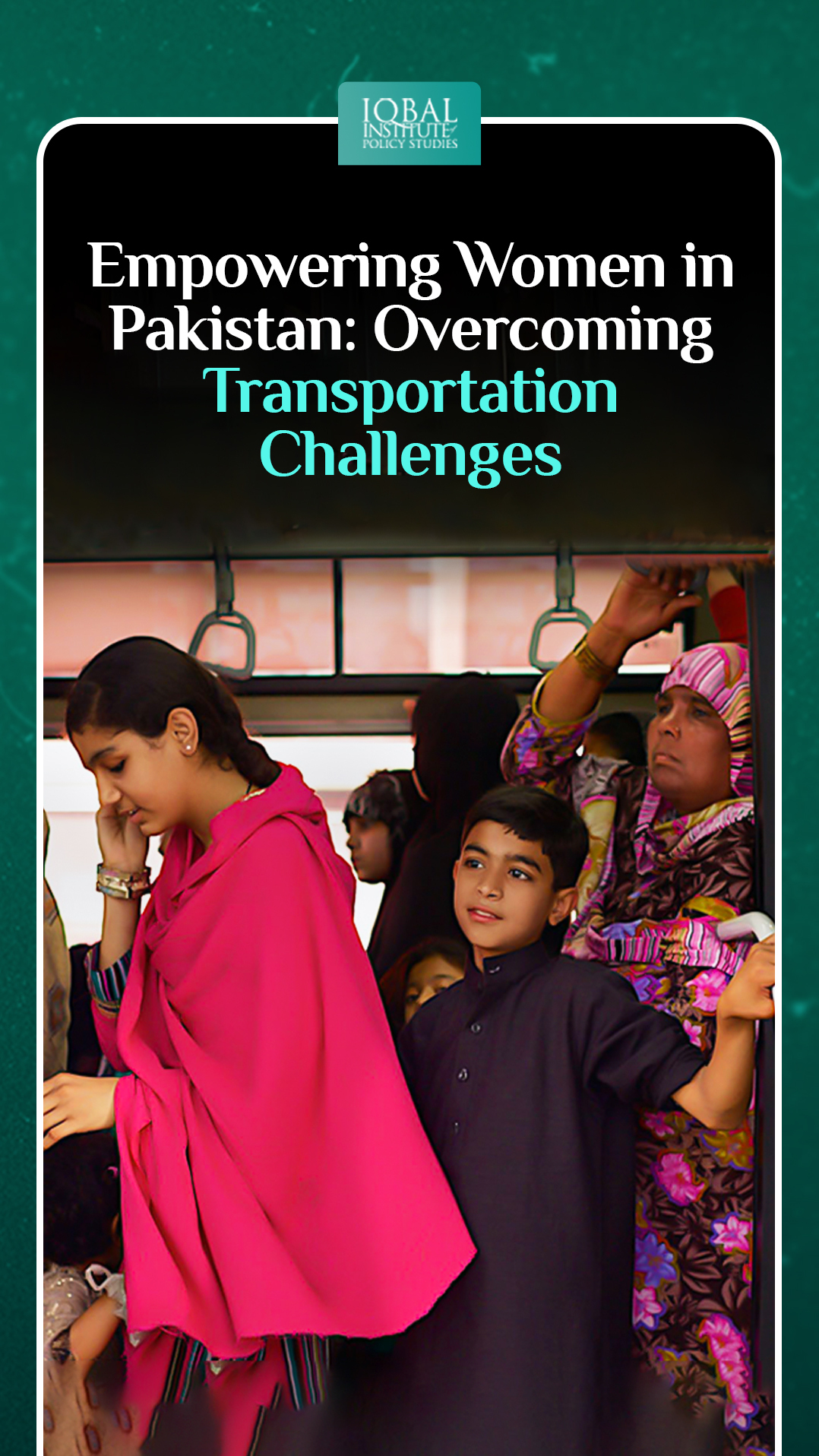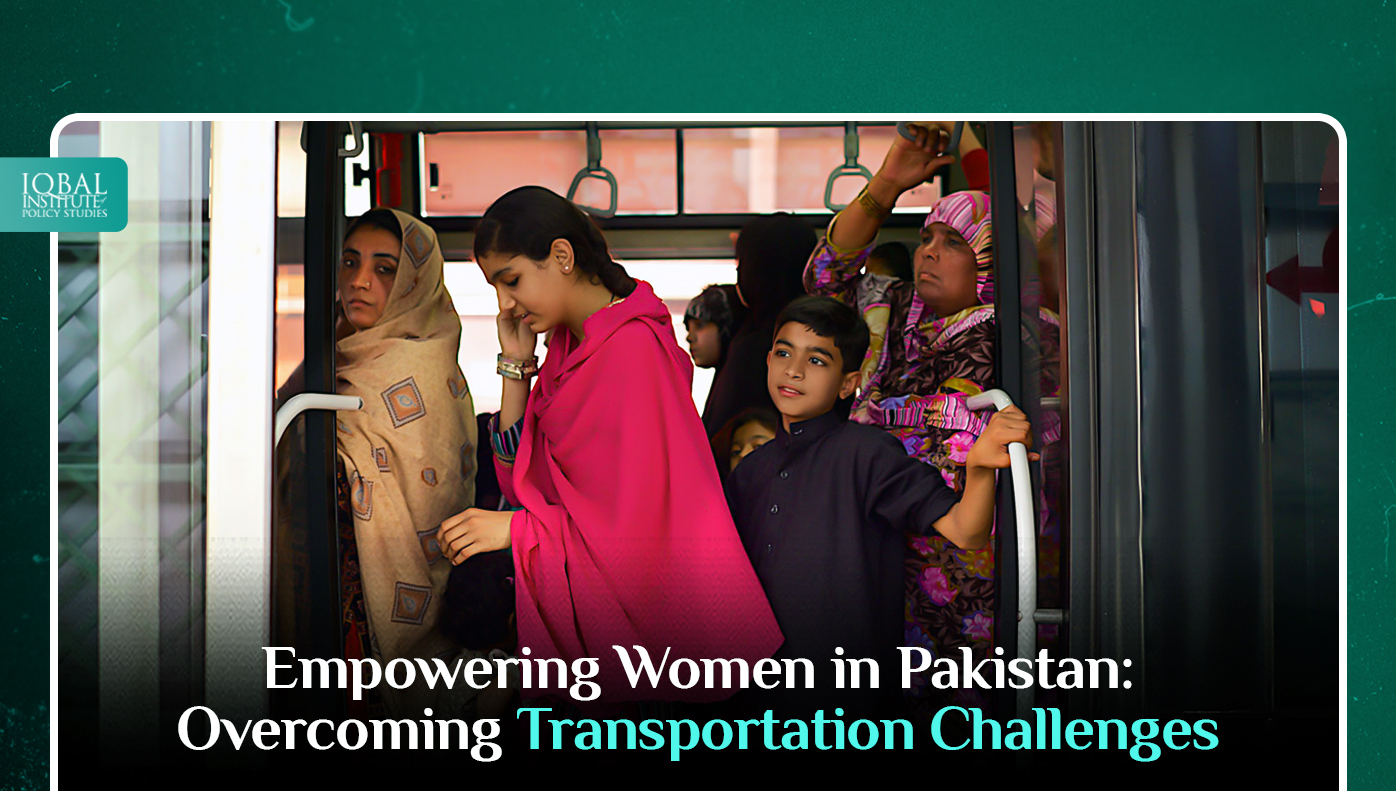Transportation is the lifeblood of any society, connecting people to education, employment, healthcare, and countless opportunities. Yet, in Pakistan, a significant portion of the population faces an often-overlooked barrier to these opportunities: transportation challenges, particularly women. The everyday act of moving from one place to another can be a complex ordeal for women in Pakistan, influenced by a multitude of factors, from inadequate public transportation infrastructure to deeply entrenched cultural norms. In this blog post, we delve into the intricate web of obstacles that women encounter in their quest for mobility and explore a range of innovative strategies aimed at empowering women, enhancing their access to education and employment, and dismantling the barriers that have held them back for far too long. It’s a journey toward creating a more inclusive and equitable society in Pakistan, one where women can fully participate in the nation’s development and progress.
Transportation Challenges for Women in Pakistan
Lack of Safe and Reliable Public Transport
One of the primary challenges women face in Pakistan is the inadequacy of safe and reliable public transportation. Many areas lack proper public transport infrastructure, and where it does exist, it’s often overcrowded, uncomfortable, and unsafe. This can be a significant barrier for women who need to travel for work or education.
Limited Mobility Due to Cultural Norms
Pakistan has conservative cultural norms, which restrict the mobility of women. Women may need permission to leave their homes or be accompanied by a male family member when traveling. This cultural restriction can limit their access to education and employment opportunities.
Security Concerns
Safety concerns are a significant issue for women using public transport. Incidents of harassment, both verbal and physical, are distressingly common. This not only traumatizes women but also deters them from using public transportation.
Inadequate Infrastructure for Cyclists and Pedestrians
For women who cannot afford or access motorized transportation, walking or cycling is often the only option. However, there is often a lack of safe infrastructure for pedestrians and cyclists, making these modes of transport less viable.
Strategies to Overcome Transportation Challenges for Women
Improving Public Transportation
To address the issue of unreliable and unsafe public transport, the government and local authorities should invest in modernizing and expanding public transportation systems. This includes introducing women-only transport services and enforcing stricter regulations against harassment.
Empowerment Through Education
Education plays a pivotal role in empowering women. Scholarships and educational incentives should be provided to encourage girls and women to pursue education. Online education options can also help overcome transportation barriers.
Community Engagement
Engaging with local communities and religious leaders can help change cultural norms. Encouraging discussions on women’s mobility and safety can lead to more accepting attitudes and may reduce restrictions.
Urban Planning and Infrastructure Development
Developing pedestrian and cycling infrastructure can promote alternative modes of transportation for women, increasing their mobility. Safe walkways and dedicated cycling lanes should be integrated into urban planning.
Ridesharing and Ride-Hailing Services
Ridesharing and ride-hailing services can offer women a safer and more convenient transportation option. Companies like Uber and Careem have made efforts to provide women with female drivers, offering a level of comfort and security.
Public Awareness Campaigns
Public awareness campaigns should be launched to educate the population about the importance of women’s access to transportation, their right to mobility, and the importance of respecting their space and safety.
Legislative Measures
The government should introduce and enforce legislation to protect women from harassment on public transportation. Strict penalties for offenders can act as a deterrent.
Economic Empowerment
Economic empowerment programs can help women afford their own means of transportation. Microfinance and small business development initiatives can assist women in achieving financial independence.
Conclusion
In conclusion, the transportation challenges faced by women in Pakistan are multi-faceted and deeply entrenched in societal norms and infrastructure limitations. However, addressing these challenges is not only a matter of women’s rights but also a crucial step towards fostering a more inclusive and progressive society. To empower women and promote their independence, it is essential to invest in modernizing and expanding public transportation, creating safe spaces free from harassment, and encouraging cultural shifts that promote women’s mobility. By improving access to education, employment, and healthcare, Pakistan can harness the untapped potential of its female population, leading to a more prosperous and equitable future for the nation. Through a combination of infrastructure development, education, community engagement, and legislative measures, Pakistan can overcome these transportation challenges and pave the way for a brighter, more inclusive tomorrow for all of its citizens, regardless of gender.
This article is written by Radma Nouman. Radma is a research analyst at the Iqbal Institute of Policy Studies (IIPS).



Leave a Reply